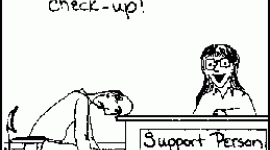How to Help Your Anxious Child
Strategies to guide parents in helping your child deal with his fears and anxieties.
 Parents can help children develop the skills and confidence to overcome fears so that they don't evolve into phobic reactions. The following steps will guide you in helping your child deal with his fears and anxieties.
Parents can help children develop the skills and confidence to overcome fears so that they don't evolve into phobic reactions. The following steps will guide you in helping your child deal with his fears and anxieties.
Recognize that the fear is real. As trivial as a fear may seem, it feels real to the child and it is causing him to feel anxious and afraid. "Being able to talk about fears can help," says Katharina Manassis, MD, author of Keys to Parenting Your Anxious Child. "Words often take some of the power out of emotion; if you can give the fear a name it becomes more manageable. As with any negative feeling, the more you talk about it, the more it becomes less powerful."
Never belittle the fear as a way of forcing the child to overcome it. Telling a child, "Don't be ridiculous! There are no monsters in your closet!" may get him to go to bed, but it won't make the fear go away.
However, don't cater to fears. If your child doesn't like dogs, don't cross the street deliberately to avoid one. This will reinforce that dogs should be feared and avoided.
Teach the child how to rate fear. If your child can visualize the intensity of the fear on a scale of 1 to 10, with 10 being the strongest, he may be able to "see" the fear as less intense than first imagined. Younger children can think about how "full of fear" they are, with being full "up to my knees" as not so scared, "up to my stomach" as more frightened, and "up to my head" as truly petrified.
Teach coping strategies. Try these easy-to-implement techniques. Using you as "home base," the child can venture out toward the feared object, and then return to you for safety before venturing out again. The child can also learn some positive self-statements, such as "I can do this" and "I will be OK," which he can say to himself when he feels anxious. Relaxation techniques are helpful as well, including visualization (of floating on a cloud or lying on a beach, for example) and deep breathing (imagining that the lungs are balloons and letting them slowly deflate).
The key to resolving fears and anxieties is to overcome them. Using these suggestions, you can help your child better cope with life's situations.
next: Where to Find Psychiatric Help for Your Child
~ anxiety-panic library articles
~ all anxiety disorders articles
APA Reference
Tracy, N.
(2007, February 17). How to Help Your Anxious Child, HealthyPlace. Retrieved
on 2025, December 25 from https://www.healthyplace.com/anxiety-panic/articles/how-to-help-your-anxious-child



